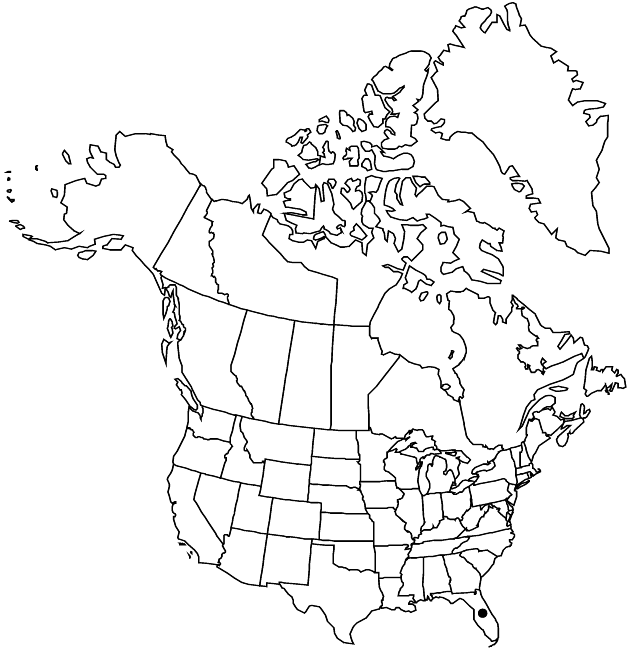Chrysopsis subulata
Man. S.E. Fl., 1338, 1508. 1933.
Biennials, 20–70 cm; taprooted (frequently perennating by rosettes produced at bases of old stems and at ends of short lateral rhizomes and roots). Stems 1–5+, erect (sometimes purple-tinged), often much branched proximally, glabrous to sparsely pilose, eglandular. Leaves: basal blades oblanceolate to linear-oblanceolate, (first season leaves) 50–100 × 4–10 mm, faces densely woolly; cauline blades linear-lanceolate to linear, reduced distally, bases tapering to rounded, margins entire, long-piloso-ciliate, often undulate, apices acute, often twisted, faces sparsely pilose. Heads 10–70 in lax corymbiform arrays. Peduncles 1–10 cm (thin), glabrous or glabrate; bracteoles linear-lanceolate (margins ciliate), glabrous or sparsely pilose, sometimes sparsely stipitate-glandular. Involucres campanulate, 8–10 mm. Phyllaries in 4–5 series, linear, 0.6–0.9 mm wide, unequal, apices long-attenuate, rarely acute (some n Florida collections), tips spreading to reflexed, twisted, faces proximally glabrous or sparsely stipitate-glandular. Ray-florets 10–28; laminae 5–8 (–10) × 1.5–2 mm. Disc-florets 30–45; corollas 5–6 mm, lobes ca. 0.5 mm. Cypselae 1.5–2 mm, 6–10-ridged (ridges yellow to dark redbrown, translucent, clavate), weakly ribbed, faces glabrate to sparsely strigose proximally; pappi in 3 series, outer of linear to linear-triangular scales 0.4–1 mm, inner of 20–25 bristles 6–7 mm, inner moderately clavate. 2n = 10.
Phenology: Flowering (May–)Jul–Aug(–Sep).
Habitat: Sandy open grounds, pine and oak scrub
Elevation: 10–50 m
Discussion
Chrysopsis subulata is found on the central to northern peninsula. Early blooming plants may have a second blooming flush in October to December with flowering heads on otherwise brown and dried stems or from short new shoots developing from lower nodes.
Plants of Chrysopsis subulata from Alachua County have acute phyllaries rather than long-attenuate and reflexed, but the leaves have long-pilose margins typical of the species. The number of ridges on the cypselae varies from a few red-brown as in C. linearifolia subsp. dressii to covering nearly the entire body.
Selected References
None.
Lower Taxa
"thin" is not a number."[" is not declared as a valid unit of measurement for this property."]" is not declared as a valid unit of measurement for this property.
